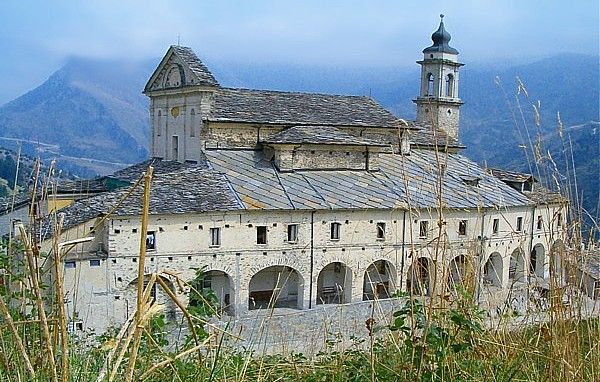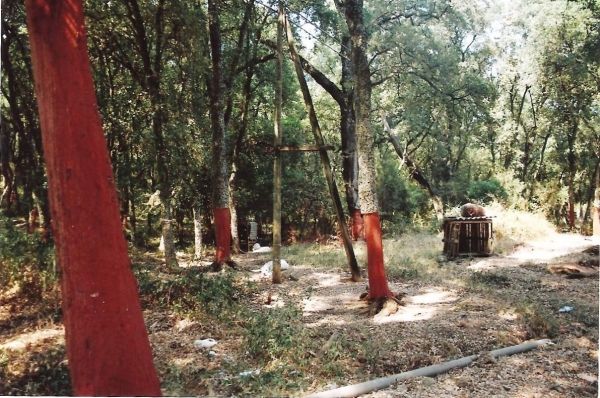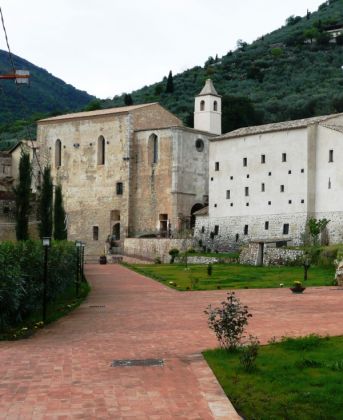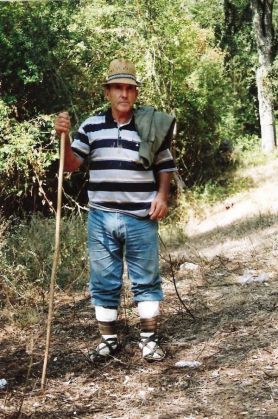A remote cork oak forest south of Rome has been undisturbed for centuries.
The little-known S. Vito cork oak forest of Monte S. Biagio, bordering the Monte Aurunci Park, is a treasure of nature that has been preserved for centuries, miraculously intact. It is so little known that you are quite likely to have the woodland walks all to yourself, apart from the occasional shepherd with his sheep and goats. The shepherds themselves look as if they got stuck in a time warp, because they still wear the uniform of yesteryear – a soft peaked hat, white wool stockings and the traditional cioccia sandals with the long leather throngs tied round their calves. Even the goats are special: they are a unique breed, known as the Bianca Montecelana.
Monte S. Biagio itself is a Christmas-crib village sprawling over the side of a hill some ten km south of the fishing port of Terracina. It is best reached via the old Appia (SS7) that cuts, straight as a die, through the Pontine plain, a vast, malaria-infested swamp until the first half of last century when it was drained and turned into farmland. The canals running parallel with the road are a haven for water birds, and the road is flanked by rows of shady umbrella pines – a boon when driving on a hot day.
Just before you get to Terracina, following the indications for Fondi you branch off onto a flyover leading into the impressive 2.7km Tempio di Giove tunnel through the mountains.
Coming out at the other end is a revelation because you find yourself – like Alice in Wonderland – in another world. The landscape of flat orderly fields, regimented rows of olive groves and distant craggy mountains is transformed into the typical rural environment of the Italian south: a cheerful clutter of ruined mediaeval watch towers, smallholdings, workshops and small industries immersed in orange and lemon groves, prickly-pear cacti and exotic flowers like bougainvillea and morning glory cascading over broken-down walls. The SS7 (yes, you're still following the old Appia south) winds past the lake of Fondi, one of a string of fresh-water lakes running parallel with the coast, and on to the town of Monte S. Biagio. Look out for the brown sign at a left-hand turning indicating the Sughereta S. Vito.
Follow the winding country road for four or five kilometres to the Bar Villa, where the road divides. The left-hand fork takes you straight into the Sughereta, or cork oak wood, believed to be the largest in Italy.
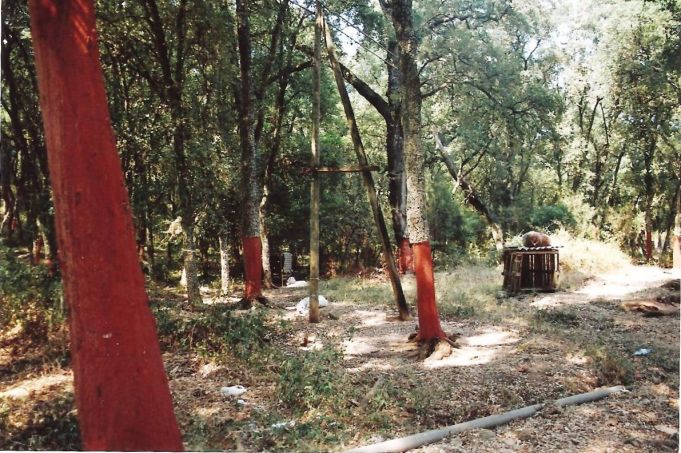
Cork manufacturers from Sardinia harvest the cork trees in rotation each summer, leaving their exposed trunks in various stages of red nudity. It's a slow process as it takes nine to ten years for the new bark to form. Although cork has suffered a decline in popularity recently since the introduction of synthetic wine bottle stoppers, eco-manufacturers predict a new future in the field of natural insulation, so cultivation is still viable. This is important for the conservation of this magnificent forest, as the undergrowth is kept under control and the footpaths are cleared.
It was a surprise to find a restaurant, let alone a riding school up in the hills in the heart of the wood, but a surfaced road takes you to the Azienda Equituristica Sughereta di S. Vito run by the Brancaleone family, which organises horseback treks and specialised riding courses for disabled children.
After a hearty lunch at the riding school carry on along the SS7 to visit Fondi, a town of great charm and seat of the leading wholesale fruit and vegetable market (MOF) for the south of Italy. Its towering mediaeval keep dominates the spacious pedestrianised main square, and it is hard to believe that this castle was reduced to a heap of rubble during world war two. On the opposite side of the square are the remains of Roman baths. Streets lead off into the old town and the ghetto, with characteristic narrow alleys, white-stone paving and wrought iron balconies.
Leaving Fondi by the way you came, you'll find (on the right) the road for Lenola, with signs for the abbey of St Magno. The mediaeval church has been restored recently after centuries of abandonment, and is happy to welcome visitors. The abbey has a very distinguished history: founded by St Onorato early in the sixth century to succour pilgrims travelling up and down the Via Appia, it is perhaps the earliest monastic community in Italy, preceding even those founded by St Benedict. The “onorati” monks of Fondi, in fact, feature in a document written by Pope Gregory the Great.
Built over the ruins of an ancient Roman sanctuary, the church contains a third-century chapel dedicated to the local martyr St Paterno. According to tradition he died in250 AD along with St Magno who gave the monastery its name. During the recent restoration, our guide told us, the skeletons of a large number of young men were found under the floor, perhaps some of the 200 monks who formed part of the early community.
Little remains of the original decoration apart from some fragments of 11th-century frescos, and the carefully-restored interior has deliberately been kept simple to highlight the plain gothic lines and the cream-coloured stonework.
Margaret Stenhouse
Fraternità Monastero S. Magno, Via Valle Vigna, Fondi. Guided visits: Emilio 3289697354. The abbey is closed on Mondays. www.monasterodisanmagno.it, segreteriamonastero@gmail.com. Azienda Equituristica Sughereta di S. Vito, Via S. Vito 47 (in the heart of the cork oak wood), tel. 0771566997.
This article was published in the June 2011 edition of Wanted in Rome magazine.
General Info
View on Map
Fondi's sleepy valley
04022 Fondi, Province of Latina, Italy



